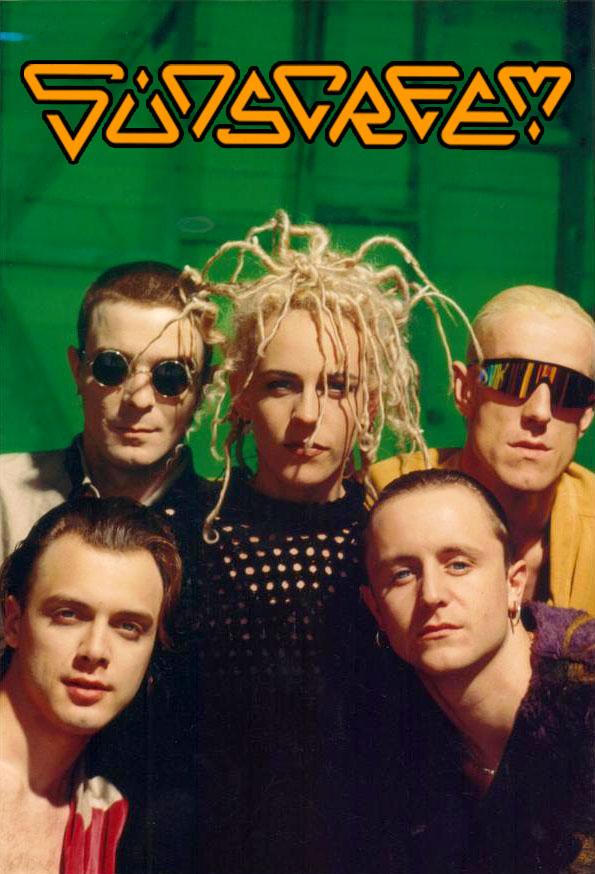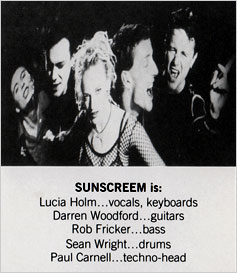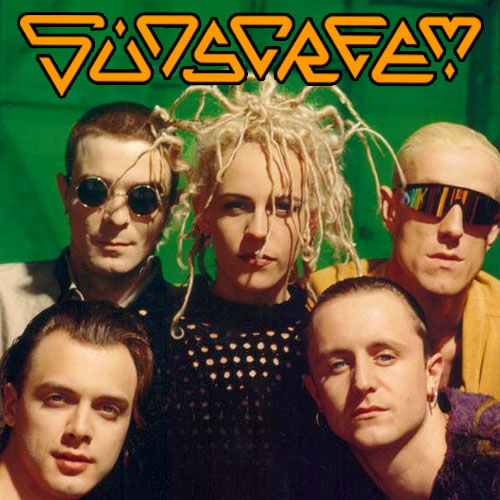Sunscreem Biography
by Sherman of New Musical Express, UK for Columbia Records / © 1993 Columbia Records
I caught Sunscreem for the first time at a South London club in the autumn of ’91. Friends of friends. Come and see this band, they said, they play live. I was confused. To be absolutely honest, I was expecting dodgy indie/dance band, of which there was a spate around that time. To be honest, I was knocked out.

I’d witnessed countless PAs at raves, enjoying the spectacle but knowing all that was propelling them into the arena was a DAT tape and a couple of occasionally prodded samples from a propped up keyboard player. What Sunscreem offered wasn’t in the rulebook, this was like being at a ‘proper’ gig yet still being caught up in the full culture of clubbing.
Alongside the bouncing, dreadlocked, angelic-sounding vocalist and the keyboard player brutalizing his equipment, was a bass player who acid-danced whilst plucking out the tightest of guidelines, a guitarist who jacked about like Angus Young on a smiley binge, and a real drummer, machine-like in composure, who added weight to the assortment of sequences and samples.
They formed this incredible sound that was having an effect on a crowd lost in the animated energy that emanated from the stage. They must be miming, I thought. They weren’t.
It was in-between these gigs that Sunscreem began recording, often returning home from a show late at night, only to dive straight into the spaghetti-like wires of Retreat. There they would capture the spontaneity, excitement and raw energy of their live shows, something which for many a live act, rock or whatever, has often proved an impossible task.
Early fruits born of these often all-night sessions were harvested in September ’91 when white label remixes of Walk On were released to excellent club and press response. Mixmag described it as an “excellent debut… a huge dance hit!”

Gallery




